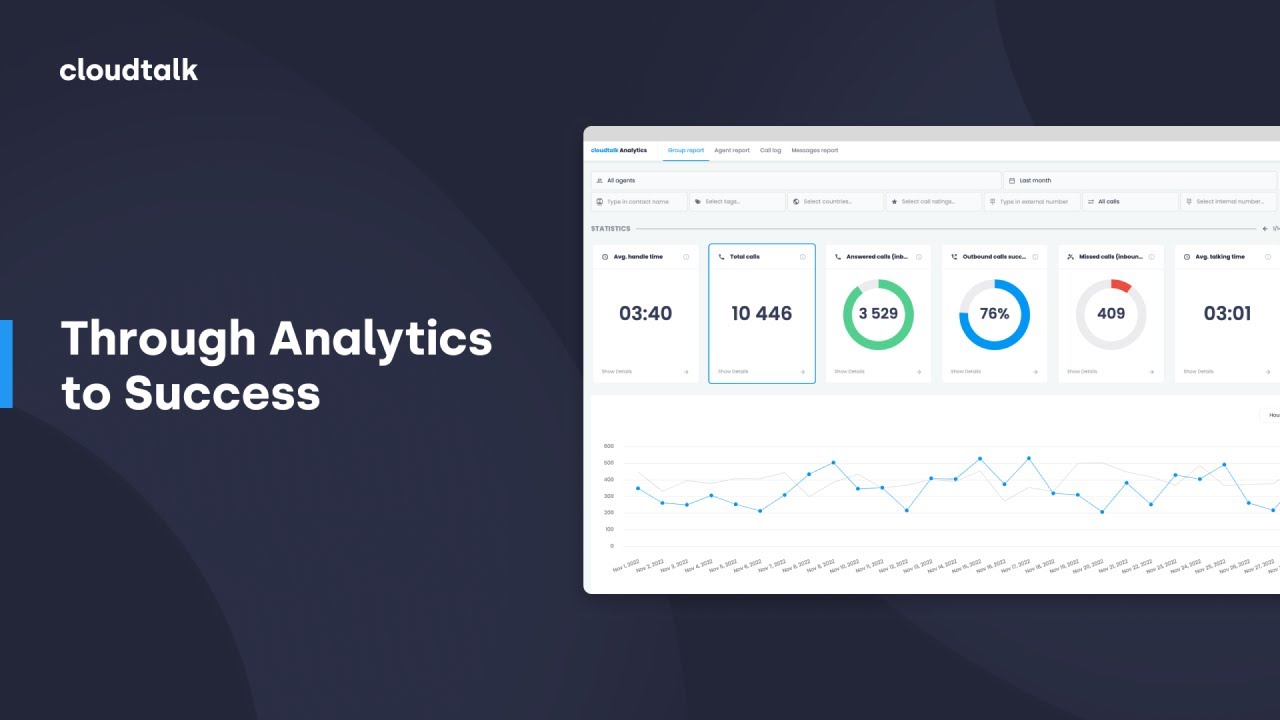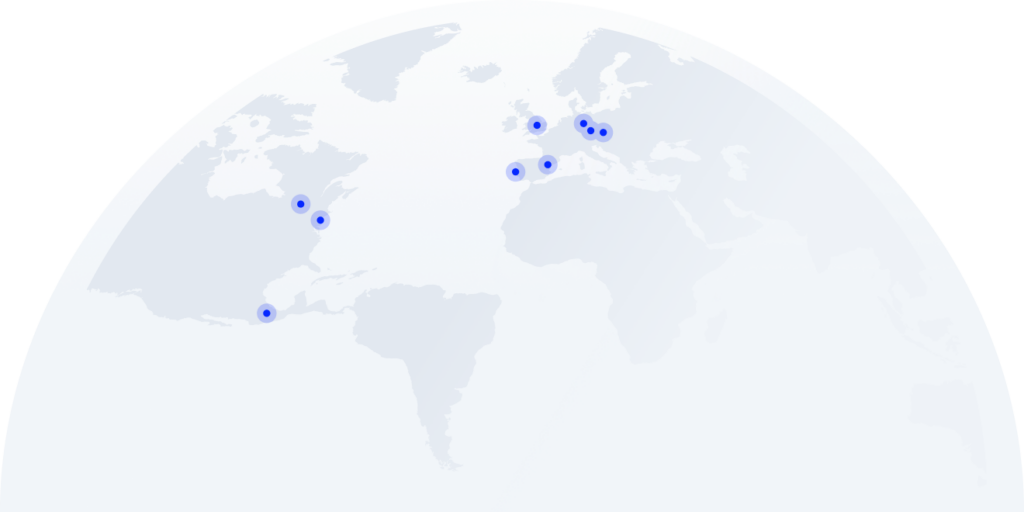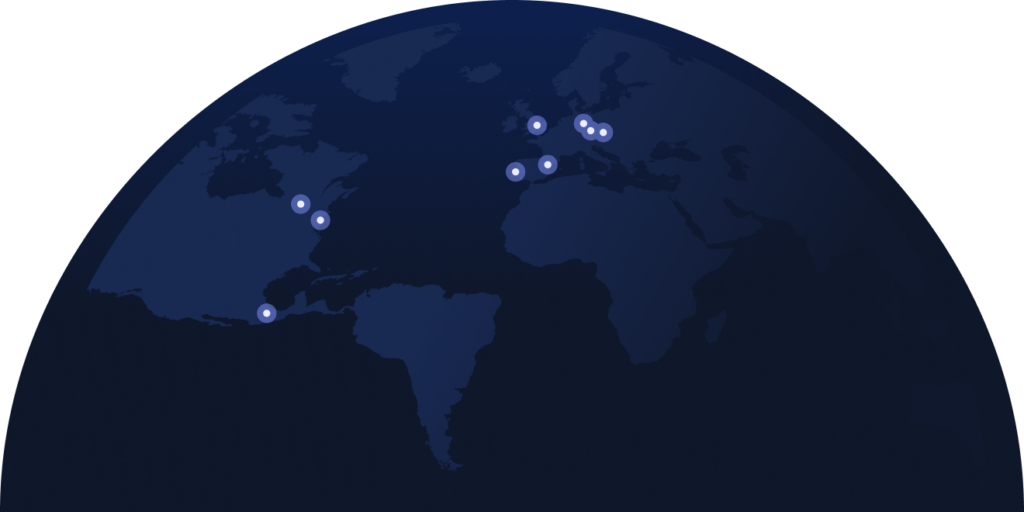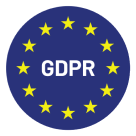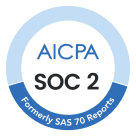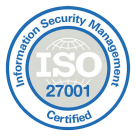Call Center Analytics Software for Smarter Insights
Make smart decisions with Call Center Analytics. Get key insights in a few clicks to boost agent productivity, improve customer satisfaction, and optimize every call with real-time data.
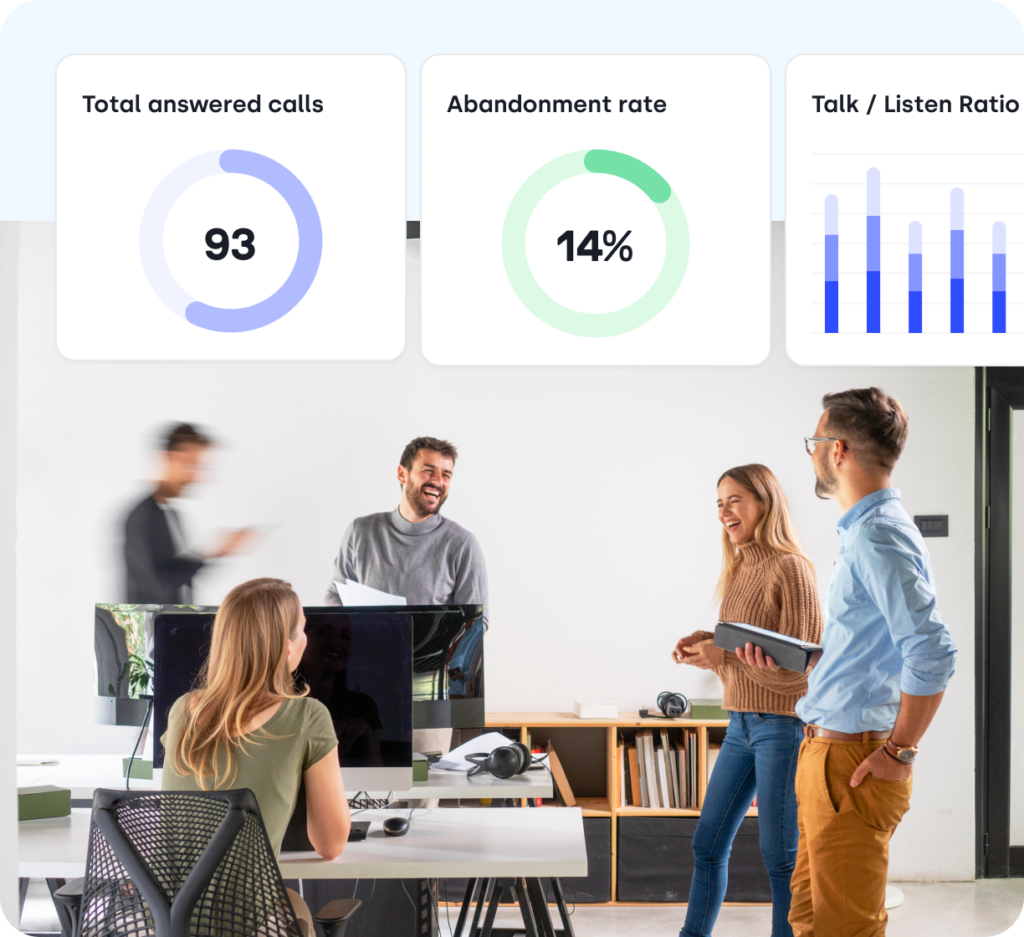
We’ve helped thousands of global companies
Case studies featuring customers who are building faster.
What Is Call Center Analytics?
Imagine having a complete understanding of your call center’s performance at your fingertips. Analytics makes this a reality. Its customizable dashboard synthesizes all your data, offering a real-time, panoramic view of your operations.
From the nitty-gritty of inbound and outbound call flows to the performance of individual agents and teams, every detail is accessible. See precisely how long customers wait, understand the volume of missed calls, and gain insight into agent effectiveness.
Actionable Insights
Make Data Work for You
Leverage real-time analytics to enhance performance and drive smarter decision-making.
Unlock Growth With Key Metrics
Understanding the right metrics is essential for optimizing operations and improving customer interactions. CloudTalk’s Analytics provides deep insights into key performance metrics, helping you make data-driven decisions with ease. Here are some of them:
- Outbound Call Success Rate: Measures the percentage of outbound calls that successfully connect with a recipient, helping assess outreach effectiveness.
- Average Total Talk Time: Tracks the total time agents spend actively speaking with customers, reflecting engagement levels and efficiency.
- Call Abandonment Rate: Shows the percentage of calls where customers hang up before reaching an agent, indicating potential wait-time issues.
- Average Handling Time (AHT): The total time spent on a call, including talk time and after-call work, helping evaluate agent productivity.

Take Analytics Further with AI Call Intelligence
AI takes analytics beyond the numbers, uncovering hidden patterns and delivering real-time intelligence. With CloudTalk AI Call Intelligence, teams gain a deeper understanding of customer behavior, giving you the inside scoop on what customers are actually feeling and talking about.
Imagine instantly grasping the emotional tone of every conversation with Sentiment Analysis, pinpointing emerging customer concerns with AI Trending Topics, and optimizing agent communication with Talk/Listen Ratio insights. These aren’t just data points; they’re actionable pathways to superior customer experiences and operational efficiency.
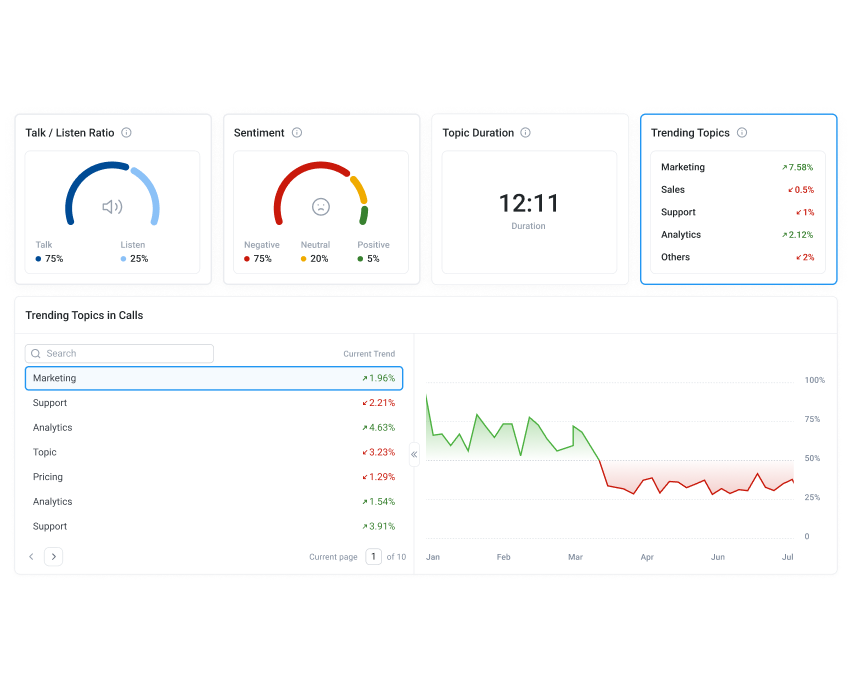
How to Set Up Call Center Analytics in CloudTalk?
- Log in to CloudTalk and access Analytics via the dashboard.
- Choose a report type (Group, Agent, Call Log, Messages).
- Customize and explore data by adjusting filters or clicking on data points for deeper insights.
- Track each call’s journey, helping you understand call flow and improve system efficiency.
- You can also export data via CSV or PDF.
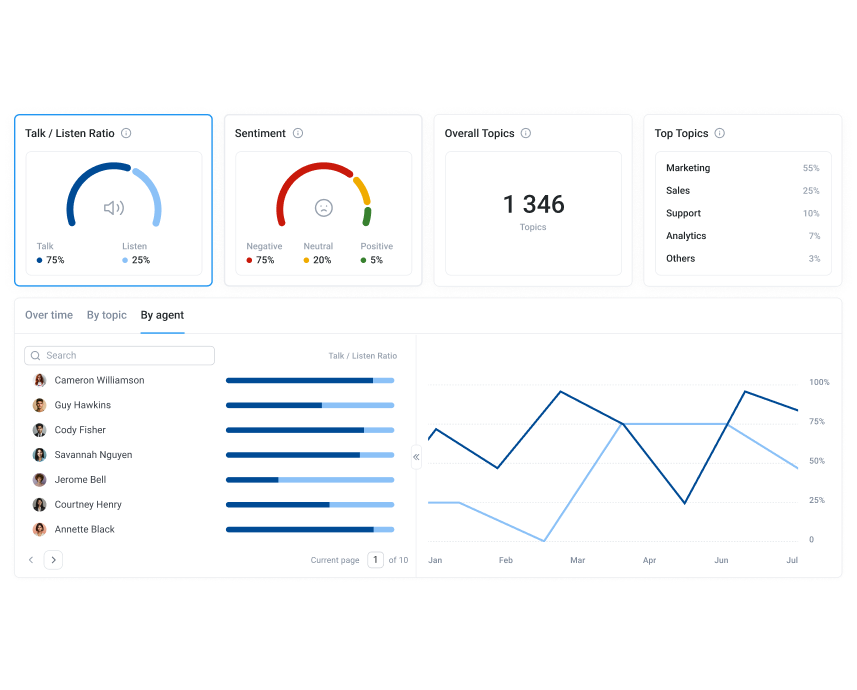
Call Center Analytics Software—Everything You Need to Know
1. Key Features of Call Center Analytics Software
Key features of call center analytical software include real-time reporting, AI-driven insights, and conversation analysis that help businesses improve customer experience and agent performance. A cloud-based call center analytics solution collects data from calls, recordings, and integrated CRMs, turning every interaction into actionable insights.
Core features of call center analytics software include:
- Real-time dashboards: monitor live metrics such as call volume, service levels, and queue performance to make staffing adjustments instantly.
- Historical reporting: review long-term KPIs like average handle time (AHT), first-call resolution, and call outcomes.
- Conversation Intelligence: transcribe calls automatically, detect sentiment, and extract topics to highlight customer needs and training opportunities.
- Agent performance tracking: analyze talk-to-listen ratios, wrap-up times, and call quality to identify where coaching can have the most impact.
- Customizable reporting filters: segment data by campaign, team, or geography for more targeted insights.
- CRM and helpdesk integrations: sync call data with tools like Salesforce, HubSpot, and Zendesk for a 360° customer view.
- API exports & BI (Business Intelligence) integrations: connect CloudTalk Analytics to platforms like Power BI, Tableau, Plecto, or Google Data Studio for deeper visualization
2. Key Benefits of Using Contact Center Analytic Software
Key benefits of using contact center analytic software include better customer experiences, higher agent productivity, and smarter business decisions. With CloudTalk Analytics & Conversation Intelligence, teams move beyond surface-level metrics and uncover insights directly from conversations.
Main call center analytics benefits include:
- Improve customer experience: detect recurring issues, monitor sentiment trends, and address pain points quickly.
- Enhance agent performance: use transcripts, summaries, and talk/listen ratios to deliver precise, data-backed coaching.
- Optimize staffing efficiency: forecast demand, balance agent workloads, and reduce idle time.
- Enable data-driven decisions: access clear dashboards and topic trends to identify where processes need refinement.
- Reduce costs: lower churn and training overhead by solving problems early and targeting coaching where it matters most.
3. Key Considerations When Choosing a Contact Center Analytic Software
Key considerations when choosing a contact center analytic software include usability, data depth, and AI-powered insights. The right tool will make analytics actionable for both managers and agents.
Factors to evaluate when choosing call center analytics software:
- Check reporting depth: ensure coverage of real-time dashboards, historical KPIs, and campaign-level detail.
- Look for AI-powered Conversation Intelligence: select solutions like CloudTalk that also offer transcription, sentiment analysis, and topic extraction to reveal insights hidden in conversations.
- Prioritize integrations: connect with CRMs and helpdesks for a complete customer picture.
- Ensure ease of use: dashboards should be customizable and intuitive so teams act on data quickly.
- Validate compliance readiness: confirm GDPR and regional regulation support for safe data handling.
- Plan for scalability: adopt a cloud-based system that can grow with your team and call volume.
4. How to Set up a Call Center Analytics Software with CloudTalk?
With CloudTalk, Call Center Analytics is available out of the box—you can start tracking key metrics within minutes of signing up. AI-powered Conversation Intelligence can be enabled just as quickly: activate the add-on, turn on call recording, and configure it from your dashboard.
Setup steps:
- Create a CloudTalk account: sign up and access analytics directly from your dashboard.
- Access core analytics: track KPIs like call volume, AHT (average handling time), and agent performance instantly.
- Activate call recording: turn on recordings for the numbers or campaigns you want to analyze.
- Enable Conversation Intelligence (optional): configure transcription, sentiment, and topic analysis.
- Integrate with your tools: connect CRM or helpdesk systems to enrich reporting.
- Customize dashboards: filter by agent, team, or campaign for tailored insights.
- Monitor and refine: review insights regularly, coach agents, and improve workflows based on data.
Frequently asked questions
Everything you need to know about the product and billing.
What are the types of call center analytics?
The main types of call center analytics are:
– Operational performance analytics: It monitors metrics like response times and issue resolution.
– Customer interaction analytics: It assesses conversation quality and customer satisfaction.
– Predictive analytics: It uses data to forecast trends and future behaviors.
– Speech analytics: It extracts insights from calls using voice recognition to enhance the experience.
How does call center analytics work?
Call center analytics collects data from phone systems to track call times and agent performance. This data helps companies make better decisions, like scheduling staff and improving customer service.
What is the difference between call center and contact center analytics?
Call center analytics focus only on phone call data, while contact center analytics analyze multiple communication channels like email, chat, and social media.
How do you analyze call center data?
To analyze call center data, collect key information like call recordings, surveys, and agent performance metrics. Track essential metrics and use the insights to improve operations, train agents, and enhance the overall customer experience.
Why is call center analytics important?
Call center analytics helps businesses improve customer service and performance. Analytics also supports data-driven decision-making, leading to cost savings, higher customer satisfaction, and increased revenue.
How can I track my call center productivity?
Track call center productivity by monitoring metrics like First Call Resolution (FCR), Average Handle Time (AHT), and occupancy rates. Use analytics tools to automate reports and combine data with agent and customer feedback. Regular reviews ensure alignment with business goals.
What are the two types of call center performance metrics?
Call center performance metrics are divided into two types:
– Overall Call Center Metrics: Track the efficiency of the entire center, such as service level and customer satisfaction.
– Agent Performance Metrics: Focused on individual productivity, including average handle time (AHT), adherence to schedule, and first response time.



Still have questions?
Can’t find the answer you’re looking for? Please chat with our team.
Ready to get started?
Join over 4,000+ modern companies that already trust CloudTalk to have MORE and BETTER calls.
